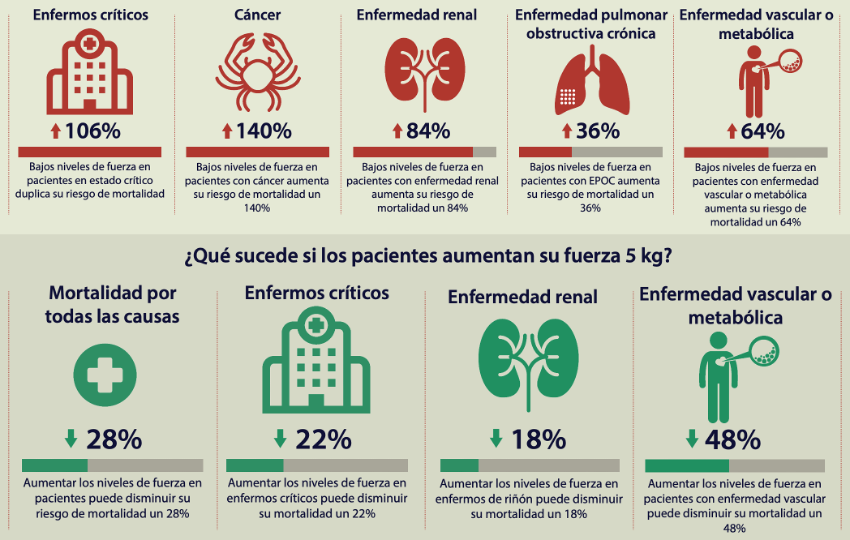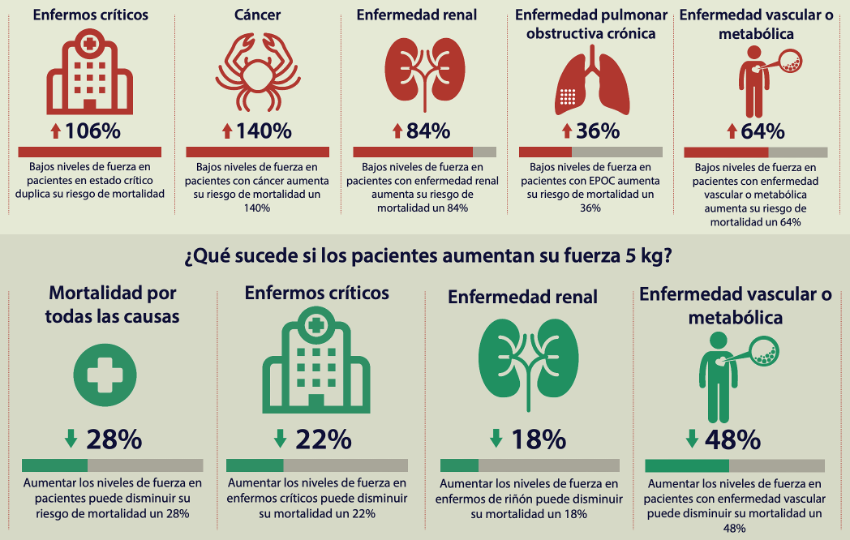150 minutes of moderate exercise or 75 minutes of intense exercise a week is what the WHO recommends, however, it does not specify the frequency. So, how often should we exercise?
We have already discussed at length the benefits that physical exercise can have on health and how it helps reduce mortality, including major diseases such as cancer or cardiovascular disease, and also the likelihood of suffering from other diseases such as obesity or diabetes. Let’s delve deeper into this.
Dr. César Montiel – Neolife Medical Team
Regular physical activity, especially low-intensity cardiorespiratory exercise, has often been highlighted as the paradigm of healthy exercise, recommended for all types of population and widely used in the world of medicine.
Clearly, cardiorespiratory exercise has an inversely proportional relationship with mortality and the presence of cardiovascular risk factors, both in the general population and in the obese. In fact, having high levels of inactivity or very low physical fitness have the same effect on health and mortality as obesity and overweight (1), which is why it has recently been proposed that the level of inactivity be considered a new “vital sign”, given its importance (2).
Other studies show that the way in which the weekly exercise time is distributed affects the benefits of exercise. These researchers analyzed a sample of 63,591 adults (58.6+/- 11.9 years) over a period of 8 years and looked at both the intensity and frequency of exercise. This showed that those who exercised in compliance or not with the WHO recommendations (150’/week) had a lower risk of mortality (3).
Specifically, they found that those who exercised in 1 or 2 sessions per week, of moderate or low intensity, without meeting the WHO criteria, had a 28-45% lower risk of cardiovascular disease, surpassing the result obtained by those who concentrated their exercise at weekends and who met the criteria recommended by the WHO. And these were also better results than a third study group, who did the same but regularly (during the week).
Likewise, the 3 groups had a lower risk of mortality from cancer and cardiovascular events than all inactive individuals (3).
Therefore, different studies confirm the health benefits and even demonstrate how a minimum dose of exercise like a 30-minute session of moderate to high intensity 1-2 times per week is almost enough to significantly reduce the risk of mortality in the population, which is why at Neolife we want to instill the benefit and importance of including the weekend in our routines as it helps us achieve our goals.
Thanks to the latest evidence on the health benefits of strength training, it has become a popular form of exercise recommended by major international health organizations. Even minimal doses such as 2-3 sessions per week have proven to provide great benefits to our body.
The benefits of aerobic physical exercise on cardiovascular disease (CVD) and mortality are widely known. However, the same is not true for strength training, in which case its effect on bone health, physical function, quality of life, or metabolic health has been mainly analyzed, with limited evidence regarding its benefits on CVD and all-cause mortality.
In this context, a group of researchers evaluated the effect of strength training and its frequency of performance, assessed by questionnaires, on CVD and mortality in 12,591 subjects. It should be noted that, regardless of having done aerobic exercise, doing strength training 1, 2, or 3 times a week reduced the risk of cardiovascular events and death by 40-70% compared to those who did not. Moreover, the lowest risk was obtained for those who strength trained 2 times a week. Surprisingly, a single weekly strength training session or only 1-59 minutes per week was already associated with a lower risk of CVD, regardless of having met aerobic exercise recommendations.
In short, one or two sessions, even less than 1 hour per week of strength training, regardless of the aerobic exercise performed, reduces the risk of cardiovascular events and all-cause mortality.
We have observed that even a minimal dose of exercise is already sufficient to significantly reduce the risk of morbidity and mortality compared to the population that does not do this type of training, which should encourage those whose busy schedules won’t allow them to train 3 or more times a week, as recommended by the main organizations, to train at least one day.

Referencia: Jochem, C., et al. Journal of the American Medical Directors Association, 2019
At Neolife, we understand the importance of muscle strength in the aging process, which is why we have recently included in our checkups an assessment of both aerobic and anaerobic fitness at various points of the consultation, as well as an initial sports assessment in other checkups as needed. We consider strength training to be our main weapon for us to proactively modify, and for the better, our well-being.
BIBLIOGRAPHY
(1) Blair, S. N., & Brodney, S. (1999). Effects of physical inactivity and obesity on morbidity and mortality: current evidence and research issues. Medicine and science in sports and exercise, 31, S646-S662.
(2) Després, J. P. (2016). Physical activity, sedentary behaviours, and cardiovascular health: when will cardiorespiratory fitness become a vital sign?. Cana- dian Journal of Cardiology, 32(4), 505-513.
(3) O´Donovan, G, Lee, I, Hamer, M, and Stamatakis, E. Association of weekend warrior and other leisure time physical activity patterns with risks for all-cause, cardiovascular disease, and cancer mortality. JAMA intern MED, 2017.Available from: http//dx.doi.org/10.1001/jamaintermed.2016.80
(4) Liu, Y., Lee, D. C., Li, Y., Zhu, W., Zhang, R., Sui, X., … & Blair, S. N. (2018). Associations of Resistance Exercise with Cardiovascular Disease Morbidity and Mortality. Medicine and Science in Sports and Exercise. [Epub ahead of print]
(5) Jochem, C., et al. Journal of the American Medical Directors Association, 2019

